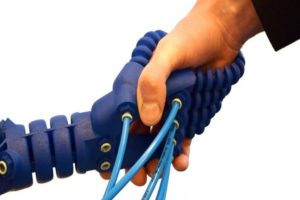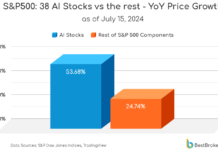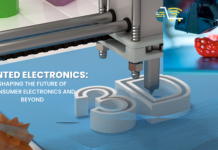
Soft robotics has many promising applications. It brings a list of capabilities absent in most other robotics, including dexterity, flexibility and safe physical interaction with humans. Soft robotics refers to robotics that are comprised of either soft materials, soft joints or soft layers over hard armatures. ABI Research, a market-foresight advisory firm providing strategic guidance on the most compelling transformative technologies, has identified and created a detailed analysis of the largely uncovered subset of the robotics industry.
The soft robotics industry is in its embryonic stages, and ABI Research details the developments that will have to occur for them to become commercialized, including improvements in materials and sensors. “But for every challenge in this emerging new field, there are multiple opportunities for researchers, technologists, business leaders, and investors to secure innovative solutions,” says Rian Whitton, Research Analyst at ABI Research. The research found that additional benefits of implementing soft robotics included the ability to move in unstructured ways and a potential for low-cost products due to lack of complex mechanical components.
Large-scale market commercialization was identified as still some way off. “Only with the rarest of exceptions, soft materials robotics development is confined to research projects. Development at the university level is occurring throughout the world, with most funding coming from governmental bodies,” Whitton concludes.
Currently, the most promising commercial use of soft robotics can be found in soft gripper technology (for handling delicate objects like food or glass) and exoskeletons, where the superior flexibility of soft materials allows the wearer more natural movement. Two educational collaborations are laboring to bring these technologies to the mainstream: Soft Robotics Inc., with their Soft Grippers and the Wyss Institute’s Soft Exosuit.
The applicability of soft grippers to the food industry is particularly encouraging for the technology. In 2015, sales of industrial robots into the food industry accounted for US$389 million. This amount is expected to increase to more than US$1.6 billion in 2025.
For exoskeletons, the number of shipments globally is currently in the tens of thousands but is expected to increase rapidly. This is a primary industry where innovations in soft robotics will be key. While some exoskeletons for heavy lifting may not require soft joints, most exoskeletons catered to the work-place, the military, the elderly, or for rehabilitation will need to allow for the dexterity and flexibility that only soft robotics can provide.
These findings are from ABI Research’s Soft Material Robotics report. This report is part of the company’s Robotics, Automation & Intelligent Systems research service, which includes research, data, and analyst insights.

















